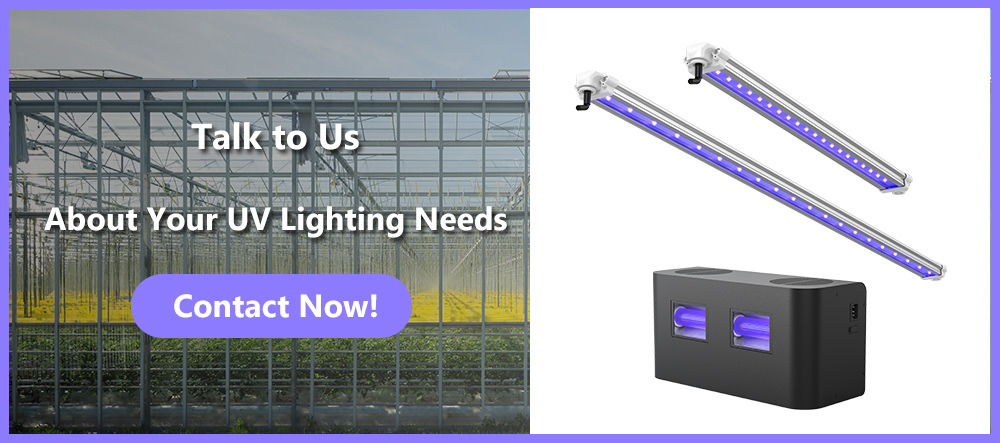How to Make Your Greenhouse HVAC System More Efficient
Many greenhouses are fitted with high quality LED grow lights to supplement lighting for plants. This enables plants to receive sufficient lighting and growers to reach higher yields. Apart from lighting, growers also want to maintain the air condition with desired temperature and humidity in greenhouses. But many loads such as the heat generated by lights and the CO2 enrichment, will affect indoor air conditions. Therefore, they utilize horticultural HVAC system. With optimal lighting, temperature, and humidity, growers are more likely to harvest plants with the best quality and maximum yields. However, commercial greenhouses are operated 24 hours per day, 7 days per week. The long running time costs high energy consumption, and it might increase the possibility of failure. Thus, learning how to make your greenhouse HVAC system more efficient is critical. It can help you improve HVAC performance and reduce costs.
What does HVAC mean
Since some growers are new to the HVAC system, let’s take a look at what HVAC is.
HVAC stands for heating, ventilation, and air conditioning. HVAC systems are mainly designed to treat air. It strives to provide optimal environment for plants by controlling the temperature, humidity, and air quality in indoor growing spaces. Compared to heat pumps and water-cooled lighting systems, HVAC in a greenhouse is more complicated. In general, an HVAC system consists of dehumidifiers, humidifiers, heating machines, cooling machines, filters, fans, UV sterilization, and other equipment.

How a greenhouse HVAC system works
Understanding how a greenhouse HVAC system works helps you take reactive measures to achieve a more efficient HVAC system. HVAC systems maintain comfortable and healthy air conditions in greenhouses in three important ways. They include heating, ventilation, and air conditioning.
Heating
Heating systems warm indoor spaces of greenhouses. There are a wide range of methods to create or distribute the heat throughout the greenhouses. When it comes to heating systems, furnaces are popular for greenhouses. Forced air heating, radiant heat, and geothermal heating are the three common ways to distribute heat. With a heating system, plants can survive under cold weather.
Ventilation
Ventilation systems remove moisture and dust and exchange air in greenhouses. They control temperature and humidity as well. Good ventilation systems improve air quality, and boost even and circulating airflow. Ventilation systems include air purifiers, humidifiers, dehumidifiers, fans, etc. With ventilation, plants are able to grow in higher quality air.
Air conditioning
High temperatures can damage your plants. Air conditioning is used to cool the air in greenhouses. By cooling the air, air conditioning regulates and provides the required temperatures for greenhouse plants. It can also control the humidity and circulate the air in greenhouses.
Tips to improve your greenhouse HVAC system efficiency
An efficient greenhouse HVAC system requires frequent maintenance, cleaning, and sterilization. Clean and comfortable air conditions not only increases efficiency of HVAC systems, but also improves plant quality and yields. Besides, functional equipment in the greenhouse HVAC system consumes less energy, in turn, reducing operation cost.
Have a maintenance plan
A maintenance plan prevents unexpected failures and costly repairs effectively. Although it requires regular maintenance, the little spend on frequent inspection and maintenance will save you a lot on repairs or replacement. Regular maintenance also extends the lifespan of HVAC equipment. Make sure the maintenance plan includes all the HVAC equipment. Moreover, maintenance should be scheduled at least annually. Seasonal maintenance is better because it enables your HVAC system to be ready for peak service times and offers higher quality air for plants. In sum, a proper maintenance plan reduces your energy bills, costs on repairs, and provides better air quality.
Clean and maintain your HVAC system
With a maintenance plan, you can clean and maintain your HVAC system regularly. This should include heating, ventilation, and air conditioning. Here are some measures for a clean and functional greenhouse HVAC system.
- Inspect and clean surrounding areas: remove leaves, grass or other objects that may grow into the HVAC system.
- Tightening electrical connections: inspect whether there are loose electrical connections, and tighten them to ensure safe operation.
- Inspecting system controls: only functional controls can make the HVAC system work properly.
- Inspect piping for leaks or cracks: check if there are leaks or cracks on piping and repair them.
- Replacing parts that are showing wear and tear: replace the worn components to prevent system failures.
- Clean or change air filter: filters trap particles and contaminants; clean or change them regularly.
- Clean air ducts: it is important to clean and disinfect ducts because dust, dirt, and debris can build up in ducts.
- Clean the evaporator coil: use a soft brush to dust the interior of the evaporator, and then spray it with cleaner
- Reset your thermostat: adjust your thermostat according to climate changes and desired temperature for your plants.
Use LED UV-C lights
UV lights, especially the UVC bands, are effective in improving air quality. Greenhouse HVAC systems are utilized to provide qualified air for plants. LED UV lights are the ideal options for contributing clean air in greenhouses and making your HVAC systems more efficient. UV-C lights are well-known for their disinfecting and sanitizing ability. LED UV-C lights can disinfect indoor spaces as well as making your greenhouses free of pests, microbes, and pollutants. 254nm and 222nm UV-C are the common selections for HVAC systems. 254nm UV-C has fast disinfection effects, but it may do harm to human skin and eyes. While 222nm UV-C is slower in disinfection, it will not affect the skin and eyes. Discover more info about 222nm UV-C. Atop provides customized horticulture lighting solutions. Specific selection of LED UV-C lights is based on your applications and desired effects. If you have any needs for UV-C lights, welcome to contact us.


